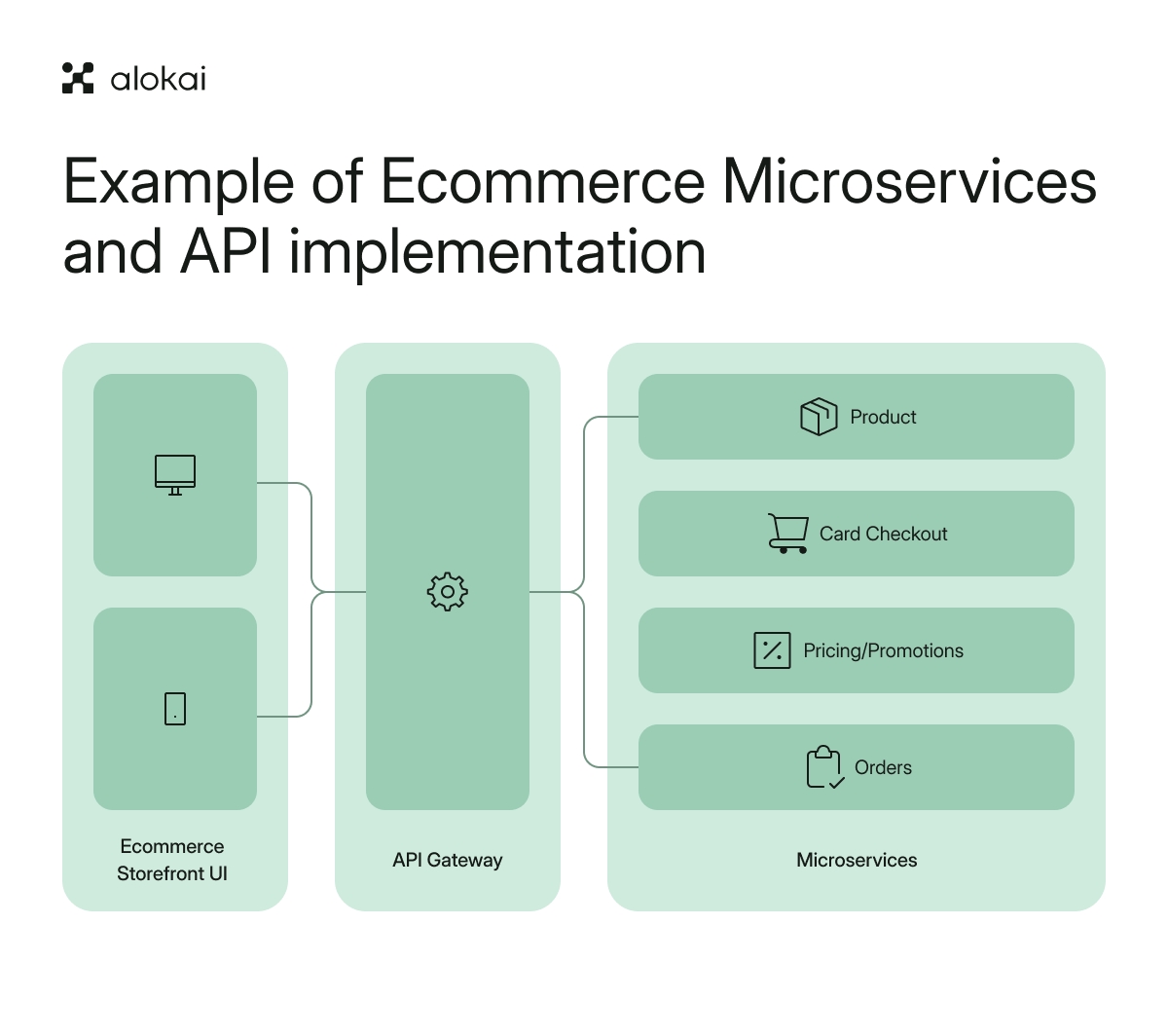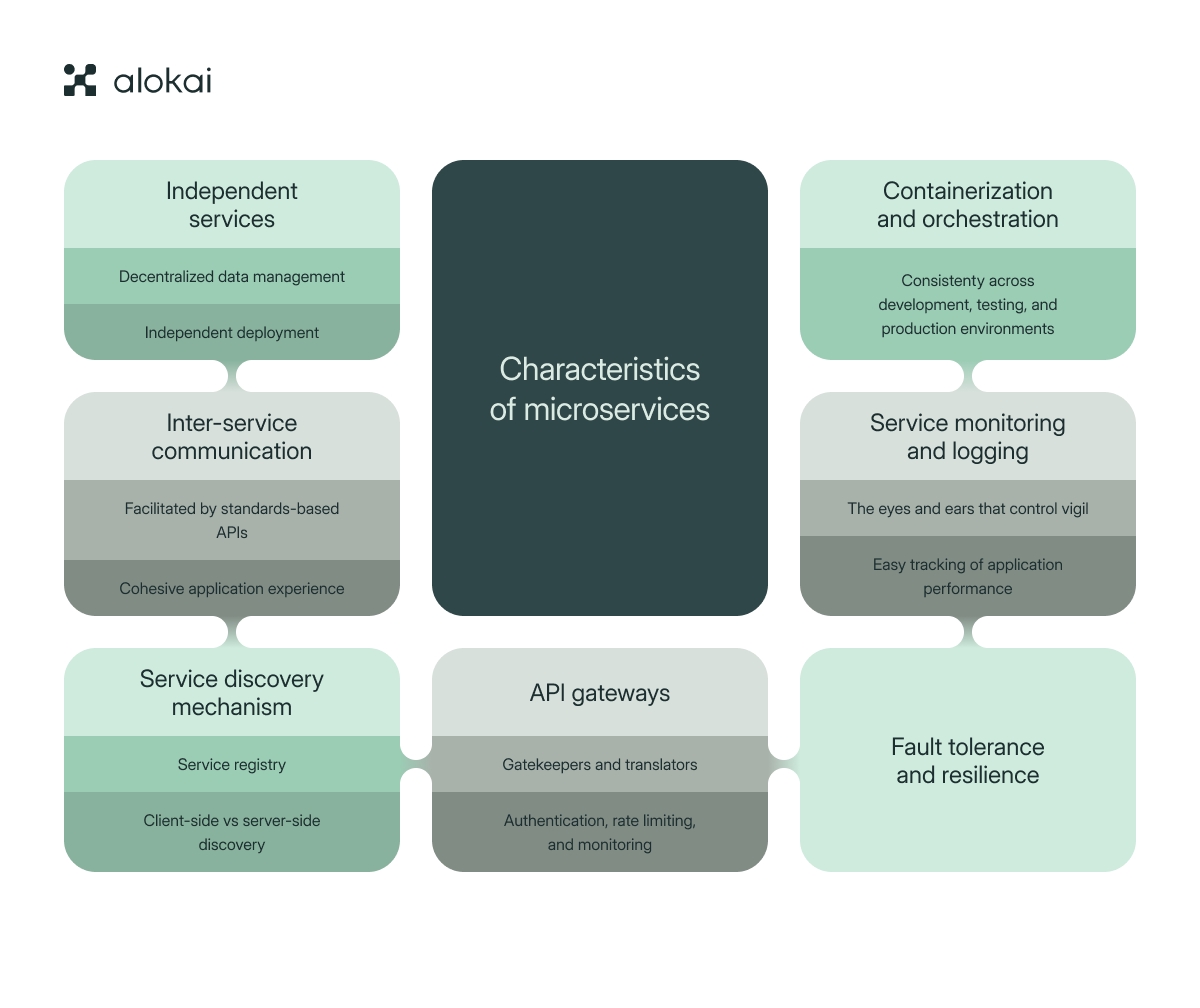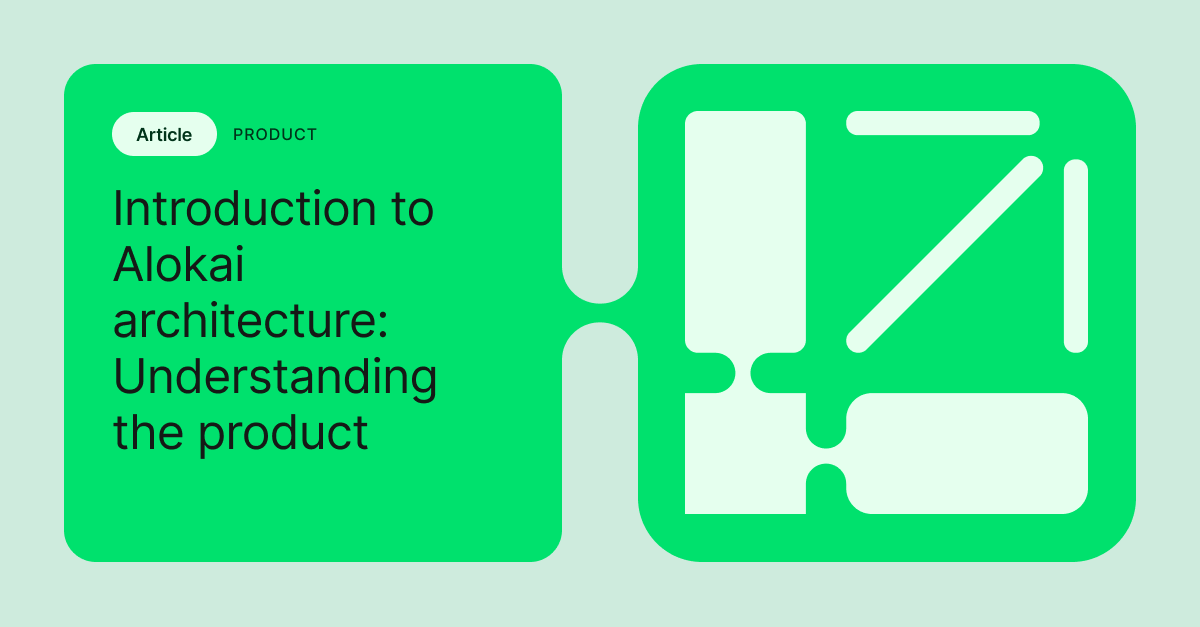Are you confused about when to use microservices versus APIs in your application? Understanding the distinction between these two is crucial for building scalable and efficient systems. This article clarifies the differences and how ‘microservice vs. API’ choices can impact your development strategy.
Key Takeaways
- APIs and microservices are fundamental in modern software development. APIs facilitate communication between applications, and microservices break down complex applications into manageable, autonomous units.
- APIs define how software components interact through standardized methods and data formats, while microservices architecture involves independently deployable services that enhance scalability and flexibility.
- Combining APIs with microservices improves application scalability, modularity, and resilience but requires attention to design consistency, security measures, and performance optimization.
Introduction

As our digital world grows increasingly interconnected, APIs (Application Programming Interfaces) and microservices have become fundamental to modern software development. Understanding their roles and how they differ is essential for anyone creating, maintaining, or scaling applications. APIs act as bridges, facilitating communication between distinct software applications, while microservices break down complex applications into manageable, autonomous units.
This blog will explore the key aspects of both APIs and microservices, unraveling their intricacies and examining how they can be leveraged to build robust, scalable systems. By the end, you will clearly understand when to use each and how they can work harmoniously to streamline your development processes.
Understanding APIs and microservices
To comprehend the full potential of APIs and microservices, it’s essential first to grasp what each term signifies. An API, or Application Programming Interface, is a set of protocols and tools that allows different software applications to communicate with each other. This functionality is vital in today’s interconnected world, where seamless data exchange between applications is necessary.
On the other hand, microservices architecture, a form of service-oriented architecture, involves:
- Breaking down an entire application into smaller, independent services
- Each microservice performs a specific function
- Communicating with other services through APIs
- This modularity enhances the scalability and flexibility of applications
- Enabling developers to manage and update services independently without affecting the entire system.
What is an API?
At its core, an API (Application Programming Interface) is a collection of protocols and methods defining how software applications interact. It acts as a bridge, exposing certain parts of an application’s functionality while hiding the underlying complexity. This simplification is crucial for developers, allowing them to:
- integrate and extend applications without needing to understand their internal workings
- access and use specific features or data from another application
- build new applications that can interact with existing ones
APIs enable developers to create powerful and innovative software solutions by providing a standardized way for applications to communicate.
APIs consist of various components, such as:
- Endpoints: specific addresses within an API that handle different types of requests, such as retrieving or updating data
- Methods: standard HTTP methods like GET, POST, PUT, and DELETE, which ensure interoperability across different systems and programming languages
- Data formats: the structure and organization of the data being exchanged between the client and the server
Understanding these components is essential for working with APIs effectively.
What is a microservice?
Microservices, by contrast, represent a microservice architecture where an application comprises small, loosely coupled, and independently deployable services. Each service is designed to perform a single business function, which can range from:
- user authentication
- payment processing
- data storage
- email notifications
- image processing
This specialization allows for a high degree of modularity and flexibility.
One of the key benefits of microservices is their ability to:
- be developed, deployed, and scaled independently
- reduce the complexity of managing large applications, enabling faster development cycles and easier maintenance
- be written in different programming languages, allowing teams to choose the best tools for each task.
Key characteristics of APIs
APIs are the linchpin of modern software integration, providing the means for different applications to communicate and share data. Their essential features include technical specifications, software interfaces, and data processing and delivery mechanisms. These components ensure that APIs can facilitate complex interactions seamlessly.
Another critical aspect of APIs is cacheability. By allowing responses to be stored and reused, APIs significantly improve performance and reduce the load on servers. This feature is particularly beneficial in frequent data retrieval scenarios, such as web applications and services.
Components of an API
The components of an API are diverse, each playing a crucial role in its functionality. Operating System APIs define how applications interact with the underlying operating system, enabling them to use system resources efficiently. Web APIs, on the other hand, facilitate machine-readable data transfer between web-based services using HTTP protocols.
APIs also include database APIs, which manage interactions between applications and databases, allowing for data access and manipulation. Endpoints, another vital component, act as specific addresses for resources, dictating how data can be read, updated, or deleted. These endpoints are integral to the communication contracts that define the data and responses required for service interactions.
Types of APIs
APIs can be classified based on their audience, architecture, and protocol. They can be external or internal, serving different scopes of users. External APIs are designed for third-party developers to integrate with, while internal APIs are used within an organization to streamline operations.
Additionally, APIs can be categorized by their release policies: public, private, or partner. Public APIs are accessible to anyone, private APIs are restricted to internal use, and partner APIs are shared with specific external partners. This classification helps organizations manage access and security based on their needs.
RESTful APIs
RESTful APIs, or Representational State Transfer APIs, follow a specific architectural style that provides a uniform interface for interacting with resources, making them a popular choice for implementing REST API. Unlike protocols, REST is a set of principles aimed at making web interactions more efficient and standardized. This approach ensures that data and functionality are treated as resources, accessible through standard HTTP methods like:
- GET
- POST
- PUT
- DELETE
A key feature of RESTful APIs is their stateless nature. This means that each request from a client to a server must contain all the information needed to understand and process it. This statelessness ensures better scalability and fault tolerance, as servers do not need to store session information between requests.
Popular APIs in eCommerce
Modularity and APIs enable connectivity, unlocking new flexible opportunities and ensuring the integrity of composable commerce. Furthermore, the API-first approach reduces costs and alleviates the frustration associated with monolithic platforms.
Time previously spent on maintenance is now dedicated to development. Many shopping platforms offer eCommerce APIs built on a serverless architecture, which unifies sales channels.
- Catalog API for creating, editing, and managing product catalog;
- Cart API - is designed to view, create, and manage customer shopping carts;
- Checkout API is responsible for the checkout experience, modifying the UX, and increasing conversions;
- Payments API is designed for building an external application (e.g., headless storefront or mobile checkout) that needs to accept credit card payments;
- GraphQL Storefront API enables building headless frontend applications on top of a default theme
- Shipping APIs for creating and automating multi-carrier shipping and logistics solutions;
- Anti-fraud API is designed to notify fraudsters before any financial losses occur.
Key characteristics of Microservices
Several key characteristics of microservices architecture make it a preferred approach for building large, complex applications. One of the primary features is decentralization, where each service manages its database and is responsible for its specific business function. This decentralization promotes modularity and scalability.
Another significant characteristic is the autonomy of individual services. Each microservice can be developed, deployed, and scaled independently, reducing the risk of systemic failures and enabling rapid iterations. This independence also allows teams to use different programming languages and technologies best suited for each service.

Components of microservices
Microservices consist of several components that work together to perform specific functions. APIs act as the communication contract between microservices, using lightweight mechanisms like HTTP Resource APIs to facilitate interaction. This ensures that each service can communicate efficiently without being tightly coupled to others.
Other essential components include business logic, which handles each service's core functionality, and the data access layer, which manages how data is retrieved and stored. Each microservice typically has its database, ensuring that data management is decentralized and tailored to the service's needs.
Stateless vs. stateful microservices
Stateless microservices handle each request independently, meaning they do not store any client context between requests. This approach enhances scalability and fault tolerance, as there is no need to maintain session information on the server. Stateless microservices are ideal for applications requiring high availability and quick failure recovery.
Conversely, stateful microservices maintain the client state across multiple requests. This persistence benefits scenarios requiring context or session information, such as user authentication services. While stateful microservices can add complexity, they are essential for applications where maintaining state is crucial.
Examples of microservices
Companies like Netflix are real-world examples of microservices. They use this architecture to manage user accounts and deliver content. By breaking down its services into smaller, independent units, Netflix can scale and update individual components without disrupting the entire application.
How APIs and microservices work together
APIs and microservices complement each other perfectly. Microservices are designed to expose their functionalities through APIs, enabling other services or external systems to interact with them easily. This interaction is typically facilitated using RESTful APIs, which provide a standard way for services to communicate and exchange data.
Integrating APIs and microservices transforms them into powerful tools for building scalable and flexible applications. While microservices serve as the building blocks for performing various services, APIs act as the glue, integrating these services into a cohesive application.
Communication mechanisms
Microservices communicate using various mechanisms, with RESTful APIs being the most common. These APIs use HTTP protocols to send and receive data, ensuring compatibility across different systems and programming languages. This method is particularly efficient for synchronous communication between services, making it a popular choice in web services.
Other communication protocols, like messaging queues or event-driven mechanisms, can be used in addition to REST APIs. These methods benefit asynchronous communication, where services do not need to wait for a response before continuing their operations.
The communication mechanism choice depends on the application's specific requirements and architecture.
Benefits of combining APIs and microservices
Combining APIs and microservices offers numerous benefits, including:
- Enhanced scalability and functionality
- APIs enable microservices to interact seamlessly, facilitating modular development and independent deployment
- This combination allows organizations to scale applications rapidly and efficiently.
Moreover, using APIs within a microservices architecture offers several benefits:
- Reduces complexity by providing clear and standardized communication channels
- Enhances the overall maintainability and security of applications
- Makes it easier to meet compliance needs
- Reduces operational costs
Comparing APIs and microservices
Understanding the differences and similarities between APIs and microservices is crucial for leveraging their full potential. Here are the key points to remember:
- APIs are tools for enabling communication between software components.
- Microservices are an architectural approach to building applications.
- Both play distinct yet complementary roles in modern software development.
Comparing these technologies lets us appreciate how they work together to enhance application scalability, flexibility, and performance. The following subsections delve deeper into their unique characteristics and shared benefits. By the way, if you want to dig deeper, check out our article about the benefits of microservices.
Differences between APIs and microservices
APIs and microservices serve different purposes within an application. APIs define the communication contracts between software components, specifying how data is exchanged and what responses are expected. They access functionality or data from third-party code, enabling integration and interoperability.
In contrast, microservices break down an application into smaller, independent units, each responsible for a specific function. These services contain all the code required for their tasks and can be developed, deployed, and scaled independently. This modularity allows for greater flexibility and easier maintenance compared to monolithic applications.
Similarities between APIs and microservices
Despite their differences, APIs, and microservices share several similarities that make them essential for modern application development. Both technologies are designed to build scalable and flexible applications, leveraging the client-server architecture to separate concerns and enable independent development and maintenance.
Moreover, APIs and microservices facilitate modular development, where different components can be updated or replaced without affecting the entire system. This modularity enhances applications' overall resilience and scalability, making them better suited to handle growing user bases and evolving business needs.
Use cases for APIs and microservices
APIs and microservices are employed across various industries to enhance application functionality and flexibility. APIs streamline internal operations by allowing different software programs to share data and functionalities, making them indispensable in finance, healthcare, and retail. They enable seamless integration with third-party services, improving overall system efficiency and user experience.
On the other hand, microservices are particularly beneficial for developing complex, scalable applications. Managing microservices allows organizations to:
- Break down large applications into smaller, manageable services, each performing a specific function
- Enhance the scalability and resilience of applications
- Make them better suited for cloud-based environments and rapidly growing user bases
This modularity enhances applications' scalability and resilience, making them better suited for cloud-based environments and rapidly growing user bases.
When to use APIs
APIs are incredibly useful in scenarios where integration with third-party services is required. For instance, payment processing APIs from companies like PayPal and Stripe facilitate secure transactions on web and mobile platforms, while shipment tracking APIs from USPS, FedEx, and UPS ensure timely deliveries and enhance customer satisfaction.
Additionally, APIs are essential for enabling functionalities that would otherwise be impossible. Activities such as playing online video games, ordering from virtual stores, and finding friends’ profiles on social media all rely on APIs to function smoothly. APIs are used in various industries, including IT, software, finance, healthcare, education, and entertainment.
When to use microservices
Microservices are advantageous in scenarios that demand high scalability and flexibility. They are particularly beneficial for developing cloud-based applications, where the user base is expected to grow exponentially. Microservice architectures allow for the independent deployment and updates of components, making them ideal for complex applications.
Moreover, microservices improve fault isolation, ensuring that issues in one service do not affect others. This resilience makes microservices suitable for highly available and reliable applications, such as e-commerce platforms, streaming services, and large-scale enterprise applications.
Challenges and considerations
While APIs and microservices offer numerous benefits, their implementation comes with challenges. Design consistency is crucial when integrating REST APIs with microservices, requiring attention to:
- API design
- Network performance
- Security
- Error handling
- Monitoring
Ensuring uniform interfaces across multiple APIs helps maintain consistency and ease of use.
Security is another critical consideration. Protecting communication between microservices is essential to prevent unauthorized access and data breaches. Performance optimization strategies, such as minimizing network latency and implementing caching, are vital to ensure system efficiency and responsiveness.
Design consistency
Maintaining design consistency across multiple APIs ensures seamless integration and ease of use. Developers should adhere to standardized principles and common design patterns to create a uniform interface. This consistency makes it easier for developers to understand and interact with various services, reducing the learning curve and potential for errors.
Uniform interfaces involve standardized methods and data formats, facilitating interoperability and maintainability. Adhering to these principles helps create a cohesive API ecosystem where services can communicate efficiently and reliably.
Security measures
Security is paramount when integrating APIs and microservices. Implementing authentication mechanisms like OAuth 2.0 or JWT ensures that only authorized users can access specific resources. HTTPS encryption and careful API key management are important measures for enhancing the security of REST APIs. They work to protect sensitive data during transmission.
Authorization mechanisms like OAuth 2.0 help enforce access controls, ensuring users have the appropriate permissions to perform actions. These measures are crucial for preventing unauthorized access and maintaining the integrity and confidentiality of data exchanged between services.
Performance optimization
Performance optimization is critical for ensuring the efficiency of microservices architectures. To minimize network latency, strategies such as consolidating multiple API requests, using pagination, and implementing server-side caching can be employed. These techniques can help improve the efficiency and speed of data transmission across networks. These techniques reduce server load and improve response times, enhancing the overall user experience.
Employing advanced communication technologies such as HTTP/2, gRPC, or GraphQL can further improve the efficiency of data exchange between microservices. These technologies offer optimized protocols for faster and more reliable communication, making them ideal for high-performance applications.
Summary
In summary, APIs and microservices are fundamental components of modern software development, each serving distinct but complementary roles. APIs act as intermediaries that enable communication between software applications, while microservices provide a modular and scalable approach to application architecture. Together, they enhance applications' flexibility, scalability, and maintainability, making them well-suited for the demands of today’s digital landscape.
As we move forward in software development, understanding and leveraging the strengths of APIs and microservices will be crucial. By integrating these technologies effectively, developers can build robust, scalable, and high-performance applications that meet the ever-evolving needs of businesses and users alike. Embrace the power of APIs and microservices and unlock the full potential of your applications.













